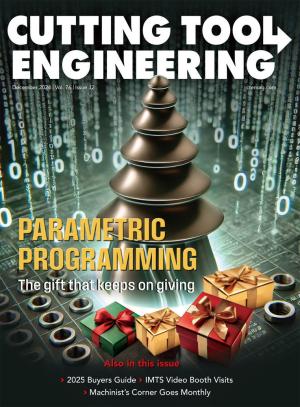With shipments of cutting tools on the decline since April — as reported by the September Cutting Tool Market Report — it’s more important than ever for Cutting Tool Engineering (CTE) to reaffirm its commitment to the metalcutting and grinding audience.
Since 1955, this magazine has informed you, our readers, about new and existing technologies while providing expert-driven guidance to help you maximize the performance of the machines, cutting tools and related equipment you rely on to succeed. Today, CTE accomplishes this with a multimedia approach that includes this magazine — in both print and digital forms — a weekly newsletter sent via email, and a website updated daily with product news, articles, webinars, videos and podcasts.
Between our magazine and newsletter, CTE reaches more than 97,000 unique subscribers each month. Additionally, our website generates about 45,000 visitor sessions monthly.
As essential as our digital media audience has become to CTE’s success in this industry, I want to take a moment to highlight the enduring value of our magazine. Of our 64,000-plus direct-request magazine subscribers, 94% are involved in selecting and/or purchasing products for their companies, according to our most recent readership study conducted by Signet Research Inc., a leading provider of advertising measurement studies. This makes sense, given that nearly 29,000 of our subscribers work in corporate management roles. When you include engineering managers, production managers, and purchasing personnel, that total grows to nearly 44,000 — about 70% of our magazine audience.
These statistics are crucial for advertisers seeking to connect with decision-makers, especially given the current market challenges. For instance, the Institute for Supply Management’s October Report on Business reported a 46.5% Manufacturing PMI, indicating a clear market decline (a PMI below 50% reflects contraction).
While digital advertising remains an understandably popular choice, marketers who overlook magazine advertising — especially in print — risk neglecting a significant portion of their target market. Consider this: Of the 44,000 decision-makers who subscribe to CTE, over 24,000 prefer the print version of the magazine exclusively. That’s roughly 38% of an advertiser’s target audience.
This brings me to an observation: Is it possible that the drop in magazine advertising over the past year has contributed to the broader market decline? Print media offers unique advantages that digital advertising cannot replicate.
Here’s why print advertising remains a valuable part of a hybrid strategy:
- Tangible Engagement: Print materials provide a distraction-free experience, enabling readers to engage deeply with content.
- Credibility and Trust: Magazines are often perceived as more authoritative and reliable, particularly in specialized industries like metalcutting.
- Longevity: Unlike digital ads, print ads have a longer shelf life. Readers often revisit magazines, extending the impact of an advertiser’s message.
Advertising experts agree that a hybrid approach, combining the strengths of print and digital media, typically delivers the best results.
I’ve written this piece for two reasons. First, I want to ensure advertisers understand that digital campaigns alone may not effectively reach target audiences who still value print media. Second, I encourage you, our readers, to mention Cutting Tool Engineering the next time you shop for machine tools, cutting tools, or other essential products. And while you’re at it, consider mentioning the unique benefits of print advertising to your tool sales representatives.
Together, we can strengthen the market, one informed decision at a time.
Related Glossary Terms
- grinding
grinding
Machining operation in which material is removed from the workpiece by a powered abrasive wheel, stone, belt, paste, sheet, compound, slurry, etc. Takes various forms: surface grinding (creates flat and/or squared surfaces); cylindrical grinding (for external cylindrical and tapered shapes, fillets, undercuts, etc.); centerless grinding; chamfering; thread and form grinding; tool and cutter grinding; offhand grinding; lapping and polishing (grinding with extremely fine grits to create ultrasmooth surfaces); honing; and disc grinding.
- lead angle
lead angle
Angle between the side-cutting edge and the projected side of the tool shank or holder, which leads the cutting tool into the workpiece.
- metalcutting ( material cutting)
metalcutting ( material cutting)
Any machining process used to part metal or other material or give a workpiece a new configuration. Conventionally applies to machining operations in which a cutting tool mechanically removes material in the form of chips; applies to any process in which metal or material is removed to create new shapes. See metalforming.







